Diversity
IN JUNE, SOJOURNERS decided to take part in a little experiment. What would happen if 300 faith and social justice leaders gathered together for a few days to discuss some of the most pressing issues of our time? Our first ever Summit, under the leadership of chief strategy officer Timothy King, had as its tagline: “World Change through Faith and Justice.” Only time will tell how this experiment will play out in the long run, but in the short term I would consider it a great success.
Held over four days in June at Georgetown University in Washington, D.C., the conference brought together 296 leaders from churches, faith-based organizations, NGOs, media outlets, business, and politics. Fifty-three percent of attendees were female, and half were people of color; they were drawn from a wide range of Christian and other religious and spiritual backgrounds.
On the first night, when I saw who was there, I knew the Summit was going to be a powerful and wonderful time. Some participants were local Washingtonians. Others came from as far away as Ethiopia to attend. The group included icons of the social justice movement such as Ron Sider, Marie Dennis, Yvonne Delk, Otis Moss Jr., and Tony Campolo as well as newer leaders such as Otis Moss III, Rachel Marie Stone, and Daniel Varghese, a Georgetown undergraduate who celebrated the Summit’s “radical egalitarianism.” As Timothy King mentioned in our opening session, the group looked a lot like the kingdom of God!

The first thing that visitors and volunteers see at the Tent of Nations just outside of Bethlehem is a large stone on which are written the words, “We refuse to be enemies.” As Israeli settlements draw ever closer to their land and the Israeli Defense Forces destroy their orchards, the Nassar family continues to pay a heavy price in their practice of Jesus’ teaching, “Love your enemies, do good to those who hate you, bless those who curse you, pray for those who abuse you (Luke 6:27-28).”
The Nassars refuse to divide the world into friends and enemies, challenging the rest of us to do the same.
As a Christian, I was raised to be pro-Israel. Since going to the region many times, I’ve become pro-Palestinian and pro-peace, too, which has led me to explore the narratives of Palestinians as well as Israelis. I grieve the deaths in both Israel and Palestine. Every human life has extraordinary value. The loss of even one life is a loss to all of us.

When the Word becomes flesh, when the Son of God becomes one who bleeds, Jesus demonstrates God's humble solidarity with human nature from Adam and Eve onward, to the last person born in history.
This vulnerability of God for us, this identification of Jesus with our collective human frailty, changes our perspective on everything. In the light that shines from the face of Jesus Christ, we at last see God and humanity with 20/20 vision.
Paul comes to this vision late in the day, well after the events of God in the flesh that reconcile the Father to God's creation. The vision of Jesus blinds him but when his eyes are healed, having seen Jesus, he sees God and humanity and the world very differently than he did before the vision of Christ that overwhelms him.
Years later, in a letter to the Corinthians, speaking about the church's worship with blest eyes he writes: "When we drink from the cup we ask God to bless, isn't that sharing in the blood of Christ? When we eat the bread we break, isn't that sharing in the body of Christ?"
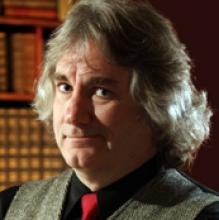
Historians have a term we call the scapegoating concept of history. This is the idea that people tend to look for others to blame — scapegoats — for their condition. They then attack that group even if it had little or nothing to do with their situation.
Islam is currently on the list of things we are supposed to be afraid of. The threat is such that even the president himself is apparently some kind of secret Muslim in league with unsavory characters. We seem to have forgotten that the deadliest example of domestic terrorism in America before Sept. 11, 2001, came at the hands of Timothy McVeigh, who blew up the federal building in Oklahoma City. Despite McVeigh’s claims to loving Jesus, no calls to ban Christianity or close churches sounded following his detestable act.
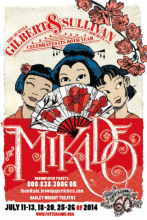
In my pastoral counseling class in seminary, the professor played a video of a counseling session of a black couple. He intended for us to learn some lessons on marriage counseling from it, but it turned out to be a laugh fest for the mostly white class. Repeatedly the husband and wife cut each other down with witty insults. My sense is that the couple reminded the students of George and Louise Jefferson from the TV show The Jeffersons. I sat next to an African American student that day and during the break I turned over to him and asked, “Do you find this funny?” He said, “I’m glad you asked,” and proceeded to tell me that he witnessed this kind of behavior firsthand in his own home since his parents are divorced. Needless to say he did not find the video amusing. I encouraged him to voice this to the class, which he courageously did when we returned from break. It seems while the professor intended to communicate one thing from showing the video, it communicated another because of the manner in which the students were racialized.
I share this story as an analogue to the recent controversy surrounding the production of the Seattle Gilbert and Sullivan Society’s The Mikado — a comic opera written in 1885 as a critique of British politics and institutions, set in distant, mysterious, and mostly made-up Japan. It began with Sharon Chan writing an editorial to the Seattle Times, calling the current production of it by an all-white cast as “yellowface” and “open[ing] old wounds and resurrect[ing] pejorative stereotypes.” Since then, Jeff Yang has also written an editorial for CNN.com entitled, “Yellowface staging of ‘The Mikado’ has to end.” I will not rehearse their arguments here; I write to address why this incident matters to North American evangelicals.

The Kenya Conference of Catholic Bishops is facing a lawsuit over the cancellation of a rental contract for a restaurant operated by a Somali Muslim.
Al-Yusra Restaurant Ltd. had signed a six-year lease starting in 2013 to operate a restaurant in a section of Waumini House where the bishops’ conference is based. Baakai Maalim, a Somali Muslim, is a director for the company.
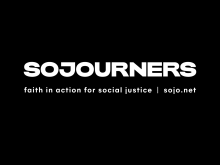
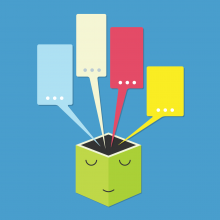
Following the release of the popular God and the Gay Christian by Matthew Vines, and the innumerable responses by conservative pundits and theologians — including the cleverly titled e-book “God and the Gay Christian?” (Note the question mark. It’s very important.) — the church is discussing the morality of same-sex behavior as it never has before.
That’s really not saying that much, since the idea of homosexuality being anything other than a sin hadn’t been discussed within mainstream Christianity at all before this decade or so.
But still. The dialogue is cool to see. It’s much-needed, and has been for a very long time. I want to call the conversation “long overdue,” but that would be an absurd understatement, like saying a baby in the 403rd trimester is “a little late.”
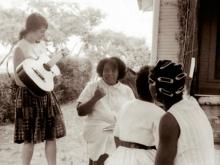
On June 2, 1964, while hundreds of Freedom Summer volunteers were still finishing their training in Oxford, Ohio, three civil rights workers went missing in Neshoba County, Miss.
Moses knew from his experience in Mississippi that James Chaney, Michael Schwerner, and Andrew Goodman, who had left the day before to investigate a church burning in Philadelphia, Miss., would never be found alive. Moses’ responsibility that evening was to tell the young recruits who planned to spend their summer registering voters in Mississippi that they could meet the same end.
What happened next surprised some. In small circles, the young volunteers sat and talked. Soon, they started singing.
LAST FALL, I WALKED INTO Room 154 at my son’s public elementary school in Great Falls, Va., for the inaugural meeting of a new after-school club. The club’s lead organizer, a parent at the school, eyed me as she stacked Annie’s Cheddar Bunnies snacks and asked about my son, a fifth-grader at the school: “Is Shibli here?”
“No,” I responded, quietly taking my seat. I’d come out of curiosity. Our school administrators had emailed parents a flyer advertising a free, exciting, fun-filled hour of “dynamic Bible lessons,” “creative learning activities,” and “inspiring missionary stories,” with a pledge to teach our children “respect for authority,” “moral values,” and “character qualities.” Would this club be a good experience for my fifth grader?
At 3:17 p.m., three minutes before the dismissal bell, the mother-volunteer said: “Asra, I’m going to have to ask you to leave. This is a kid’s club, and you don’t have a kid [here].” My curiosity turned to suspicion. Instead of leaving, I called the school district’s public affairs office who confirmed that the club, held on public school grounds, was in fact open to anyone, with or without a child.
The mother ran out of the room and returned with the school principal. He bee-lined to me, yelling: “Right now, you are disturbing the children.” I looked around. The children were happily munching on their Cheddar Bunnies. He moved the club to the gym. When I followed, he blocked my way.

One time I took a group of people in the drug rehab program to the local zoo. Most of our group had been to prison – some for years. Most were felons. Most of the women had been prostitutes as well as addicts. Most of them had been homeless, had lengthy criminal records and had, as a group, used virtually every drug — heroin, meth, crack cocaine — and had used every deception, scam, or theft to acquire their drugs. In short, they had been desperate in ways and to a degree most of us could never imagine. If you think a hungry man will commit extreme acts for food to keep from starving, an addict will commit acts a hundred times more extreme. There are few acts an addict will not do.
And yet, few of these former addicts had ever been to a zoo.
One of these people, a woman in her mid-40s, couldn’t contain her excitement as we walked into sight of the resident animals. She shrieked and ran from exhibit to exhibit — until she saw the elephants. We happened to catch the trainer as he was giving a little question-and-answer time. This woman had endless, little kid-type questions about how elephants ate, slept, how they lived, and where they came from.

My sister has one of those plastic playhouses in her backyard for her two boys. When she hosted a garage sale a few years ago, children accompanying their shopping parents would see the playhouse and join in.
I remember looking over at one point and seeing five children playing together. Different ages, different sexes, different races. All strangers. All playing together.
When they looked at each other, they saw a playmate.
In his autobiography, Nelson Mandela noted that children have an innate openness that tends to get closed off as they spend more time in the world.
“No one is born hating another person because of the colour of his skin, or his background, or his religion,” Mandela wrote in his autobiography. “People must learn to hate, and if they can learn to hate, they can be taught to love, for love comes more naturally to the human heart than its opposite.”
![By Federal Bureau of Investigation Workers (Federal Bureau of Investigation) [Public domain], via Wikimedia Commons](https://sojo.net/files/styles/medium/public/blog/Mississippi_KKK_Conspiracy_Murders_June_21_1964_Victims_Chaney_Goodman_Schwerner.jpg)
Saturday marked the 50th anniversary of the senseless slaughter and lynching of civil rights workers James Chaney, Andrew Goodman, and Michael Schwerner during Freedom Summer in Mississippi. They gave their lives to insure that every person in Mississippi would have the right to vote and be a full citizen of this nation. This interracial trio believed with all their hearts that it was worth it to put their bodies on the line for racial justice and dignity, and they paid the ultimate price.
We have come a long way in the last 50 years, but the recent deaths of Trayvon Martin and Jordan Davis in Florida remind us that much work remains, and that white supremacy may have taken different forms, but it is alive and well. And today, white supremacy operates most powerfully at the subconscious level. And it has to do with an innate feeling of superiority.
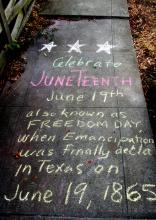
Sometimes it is hard to know even where to begin. We stare at this System, this complex web of human behaviors, and the institutions erected to memorialize them, and we simply do not know where to begin. How do we fix it?
"That's just the way it is," we say. "Some things will never change."
Systems are strange beasts. They take incredible human investment to maintain. They are the spaces by which many of us come to know ourselves, to know our place in this world. We identify ourselves in relationship to them. And yet they are so close to us as to be rendered invisible.
Until they hurt us. Until they step on us, exclude us, enslave us, brutalize us.
And this is when it gets interesting, of course; this is when they do their real work, these systems.

The United Church of Christ for the mid-Atlantic region passed a resolution Saturday asking its 40,000 members not to buy game tickets or wear any souvenir gear of the Washington NFL club until it changes its embattled team name.
“I hope this debate will continue to draw attention to an unhealed wound in our cultural fabric,” the Rev. John Deckenback, conference minister, said in a statement. “Changing the name of the Washington NFL team will not solve the problems of our country’s many trails of broken promises and discriminatory isolation of our Native American communities. However, a change in the nation’s capital can send a strong message.”
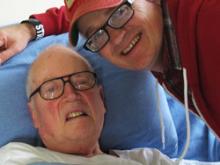
For the better part of the last 30 years, my father has been a social justice activist serving as a leader within his Christian denomination, most specifically in various leadership roles where he could be an advocate for anti-racism education, universal health care, peace with justice in the middle East, and for full inclusion of our LGBTQ family within the body of Christ.
His activism actually dates back further, to the early 1960s when he marched with Dr. Martin Luther King, Jr. in Selma, Ala. His work in the 1990s and 2000s reflected a great depth of thought and commitment as he educated himself and others like him about the importance of recognition of the role of white heterosexual privilege in society and the need for collective repentance for ignoring structural sin regarding race, gender, class, and sexual preference. He worked to transform institutions that might inhibit the full expression of personhood for all of God’s children.

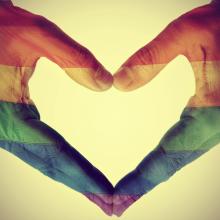
MOST discussions about the Bible and homosexuality are limited to a handful of passages and the subject is viewed as a moral issue in which the burden of proof is placed on lesbians and gay men to defend our right to be who we are in light of those passages. If we approach scripture understanding that heterosexism, like sexism and racism, is a justice issue, then we move to a different plane of inquiry.
We might then understand that what is at stake in questions of sexual morality is not sexual orientation per se but rather the rightful or wrongful use of sexuality whatever our orientation. Sexual sins can occur in both heterosexual and homosexual relationships wherever people are exploited, abused, neglected, or treated as objects. On the other hand, love, commitment, tenderness, nurture, respect, and communication can be expressed in both homosexual and heterosexual relationships.
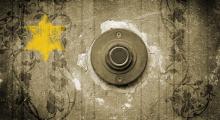
THE SHOOTINGS THAT took three lives this spring at a Jewish community center and retirement complex in Kansas are a reminder that deadly strains of what is usually called “anti-Semitism” remain with us. The fact that the shooter was a deranged white supremacist should not prevent us from coming to terms with the roots and survival of Jew-hatred in our culture.
Anti-Semitism is a made-up word that itself gives clues to the history of Jew-hatred in our civilization. The term was coined by German journalist Wilhelm Marr in 1879, one of a number of Jew-haters who were turning longstanding European Christian hatred of Jews into something modern and racial. The “Jewish problem,” therefore, became the “fact” that there was a racial group, the “Semites,” who were a mortal threat to another racial group, the “Aryans,” and therefore needed to be removed from Aryan societies. All right-thinking Germans/Europeans/Aryans, the argument went, needed to unite to combat the Semites through a scientific antisemitismus. The term is usually written “anti-Semitism” in English, but that usage profoundly reinforces the racist myth that there is a race of “Semites” needing to be opposed by “anti-Semites.” The term Jew-hatred is better because it refuses to participate in this mythology.
Modern racialized Jew-hatred flowed into the 20th century and crystallized most disastrously in Nazi Germany. There, over 12 terrible years, the 19th century anti-Jewish program was enacted, and then exceeded. Jews were to be “eliminated” from among the “Aryans,” a program that became annihilation after 1939, with 6 million Jews murdered.
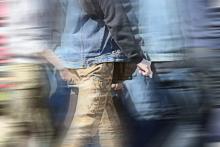
Did you see what happened in Louisiana over the weekend? A 26-year-old man was driving his pickup truck over a causeway on Lake Pontchartrain. His truck plunged over the railing and into the water.
What happened next is inspiring.